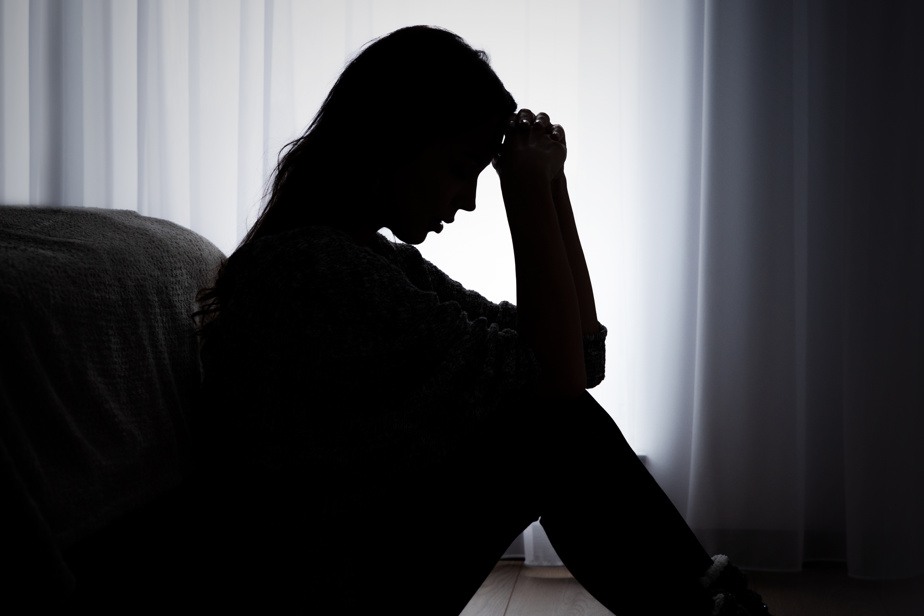The United States’ chief medical officer sounded the alarm last year about an “epidemic of loneliness.” This calamity of the third millennium fascinates researchers. Their goal: to understand the effects of isolation on the human body.
“Social isolation has been linked to a higher risk of several health problems,” says Timothy Matthews, a psychologist at the University of Greenwich, England, who published a study on the subject in January in the journal Brain, Behavior and Immunity. “We show that the cause of these health problems could be chronic inflammation. »
The British psychologist, who has been studying the issue for 10 years, establishes a difference between loneliness and social isolation. “Loneliness is a feeling, a state of mind. You can have many friends but not feel a connection with them, or not feel sufficiently recognized. Social isolation, if prolonged, is generally harmful in terms of health. » Several studies, however, use the two terms interchangeably.
Matthews’ study, which analyzed data from two longitudinal cohorts totaling 2,500 people, shows that social isolation during childhood is linked to higher rates of chronic inflammation at ages 18, 38 and 45. He warns, however, that we cannot establish a causal link with these cohorts: it is possible that another cause, for example genes, explains both chronic inflammation in adulthood and the fact of not having many friends or a rich family life during childhood.
These results are poor compared to other sources of chronic inflammation, such as bereavement or violence at a young age.
But they are statistically significant even if we take into account confounding factors such as smoking, income or education.
Timothy Matthews, psychologist at the University of Greenwich, England
Other studies have shown that social isolation increases the risk of dementia, Alzheimer’s, Parkinson’s disease and heart problems – lonely people’s blood pressure and heart rate are higher on average. Last year, researchers at the University of Maine showed that social isolation can also lead to mobility difficulties. “Our data show that social isolation is linked to slower gait, probably through chronic inflammation,” explains Rebecca MacAulay, lead author of the study published in the journal Psychosomatic Medicine.
For all these reasons, the Chief Surgeon of the United States, Vivek Murthy, published a report in May 2023 on the “loneliness epidemic” affecting the country. Even before the pandemic, half of Americans suffered from social isolation, according to the report. Social isolation increases the risk of depression and adopting poor lifestyle habits, such as a sedentary lifestyle, which amplifies its effects on health to a level comparable to smoking, affirmed the Dr Murthy.

PHOTO GETTY IMAGES
Social isolation is particularly problematic for older people.
Evolution
Why does social isolation increase inflammation? “Our ancestors were more likely to survive and have children if they were well cared for,” says Mr. Matthews. Lonely people were more likely to get hurt or attacked. The body may have automatically increased inflammation, which is a way of fighting infections, to counter this increased risk. »
Social isolation is particularly problematic for older adults because chronic inflammation is linked to many health problems of old age. However, it is particularly for the elderly that isolation is becoming more frequent, according to an American study published last winter in the journal Psychological Science.
“Loneliness follows a U-shaped curve during adulthood,” explains the study’s lead author, Eileen Graham, of Northwestern University, in suburban Chicago. “It is less common in middle adulthood, probably because of work and family relationships at that time. »
Mme Graham analyzed nine longitudinal studies involving 128,000 people aged 13 to 103, in 20 countries.
Social isolation was greater among women, less educated and poor people, but the U-shaped curve was still the same.
Other studies have shown that the beginning of the U-shaped curve begins in childhood: social isolation decreases from adolescence.
Could the time spent by young people in front of screens, which worries many commentators and researchers, change the shape of this curve? “It’s certainly a question to study,” says M.me Graham. For example, she says, it may be that the decrease in social isolation throughout adolescence and early adulthood is linked to the learning of sociability and social cues, a learning that could being compromised by too much time spent with virtual rather than physical friends.

PHOTO GETTY IMAGES
Women are more affected by isolation in old age.
Women are more affected by isolation in old age because of the family ties that are so beneficial in midlife. Mothers tend to have fewer non-family social gatherings, according to the Illinois psychologist. “In more traditional families, women’s social lives are different from men’s,” says M.me Graham. When children grow up, women who have centered their social life on their family are more at risk of loneliness, according to her.
An extreme version of solitary confinement is solitary confinement, a punitive administrative measure in prisons. “This is one of the harshest punishments in prison,” says Mr. Matthews. This is likely because of the extent of its negative effects on health and stress. »
Learn more
-
- 3
- Minimum number of close friends that American women in their 40s have who say they are very satisfied with their life.
Source : Adultspan Journal
- 6
- Minimum number of close friends that Americans with good metabolic health have.
Source : Proceedings of the National Academy of Sciences
